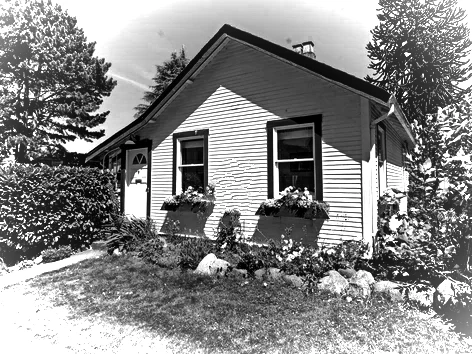- Photo: 1920's era cottage.
- Abstract: Bowen Island Home Inspection notes on a near-heritage status house. These homes typically have gone through several whole-house renovations, including restorations of craftsman features as well as additions to the original footprint.
Limited Inventory
A Bowen Island home inspection of an almost heritage status building is a special event for us. These old buildings have gone through many iterations and an inspector needs to approach the subject with understanding. For there are old and new systems existing side-by-side, some abandoned, some still functioning.
Our client was keen on a 1920’s built house. This property certainly had the ‘wow factor’ with ocean views and craftsman style features. Vancouver is relatively a young city when compared to others in North America, so this gem was really special. There are probably less than 1% of buildings of this vintage still standing. North Vancouver, West Vancouver, Bowen Island and Sunshine Coast all have their share of these aging beauties, hiding throughout their municipalities.
Unique Old House Considerations
Prior to any inspection we do an online property listing review. We especially focus on what can be gleaned from the photos. In this case, it was clear that the property was extensively renovated, but with sensitivity to its heritage. A home inspection can only cover so much in a three hour site review but there are important items that the prospective buyer needs to follow-up as part of their own due diligence. Here’s what was recommended to this buyer to do for themselves:
- Check with the municipality and verify that the plumbing and electrical permits were issued and signed-off. This is a buyer’s assurance that the work was performed according to code.
- Check if there is anything on file for structural. From the photos it was apparent that walls had been moved or removed with columns added, in order to achieve a contemporary open floor plan.
- There was a retaining wall on the property. In our area, a structural engineer is required to sign-off on the design of any retaining wall over 1.5 meters (4 feet) high. These documents should be available on-file with the municipality.
- The house had new siding and roofing. We would expect that the insulation was upgraded as well. Since wall and cathedral ceiling insulation is typically not visible during an inspection, it would be worthwhile for the buyer to question the seller on this issue; that is, what were the agreed upon insulation specifications for the contractor.
- Review the seller’s disclosure statement for an underground oil storage tank. There should be a clear statement of its existence or not. If it is not clear, then this is a red flag for further investigation, as it can be a major cost to remove and remediate the soil, if contaminated.
- Finally, be sure have a hand-over of all warranty documents, both for the new works by contractors and for the appliances, including any installed wood appliance.
- Ask the seller for any WETT Inspection documents. This is a separate inspection that verifies that a wood burning appliance has been installed to code and is safe to use. If the WETT document is less than 5 years old, the buyer’s insurer may not require the expense of another inspection.
- Ask the seller for the survey drawing. You never know if there is one available. This is an invaluable document as encroachment on property lines is common. It will cost thousands to re-survey the lot if ever one is needed.
Tap Agent Local Knowledge
Don’t forget about the realtors! Their community contacts and local market knowledge are what make them worth their commissions. The buyer’s agent will certainly be a go-to resource in obtaining some or all of this information. With the above level of due diligence, the buyer can be in a better position to assess how the house has be treated over time by prior owners.

